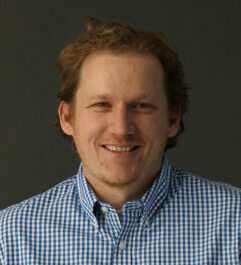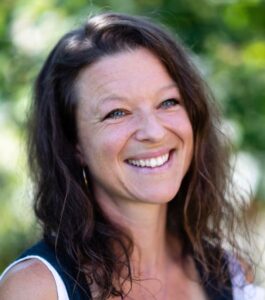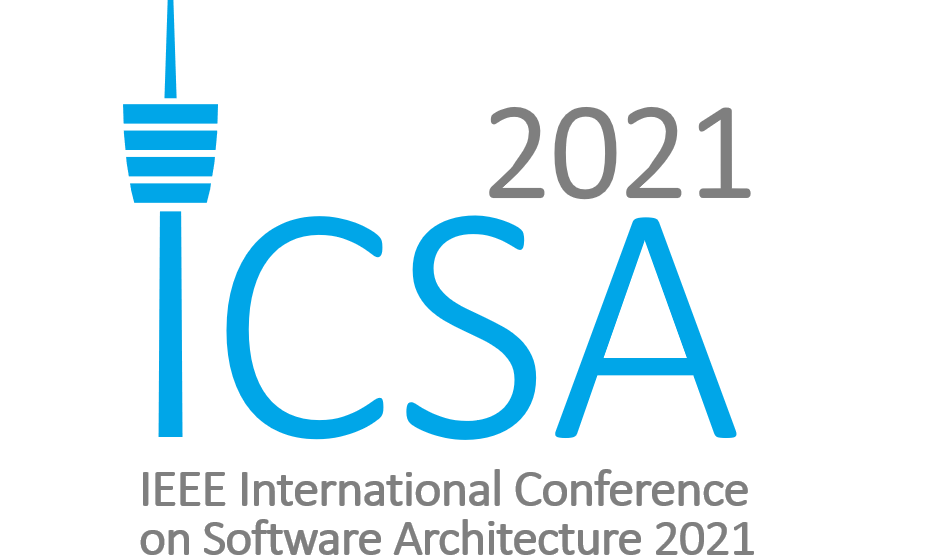Quantum circuits, and the future of quantum computing in the cloud

Speaker: Jay Gambetta, IBM Fellow, and VP of Quantum Computing
Abstract: Since 2016 when the first quantum processor was launched in the cloud by IBM for public use, open-source quantum computing software platforms have been proliferating. As we transition our focus from building a quantum processor to building a full-stack quantum
system with emphasis on expanding computational capability, the role of quantum software developers becomes more prominent than before. With this vision, we launched Qiskit in 2017 an open-source quantum software development kit, to invite software developers to the quantum computing community. In this keynote, I present how quantum software developers can help to advance quantum computing. Starting with how to program with quantum circuits, the basic computational routine that maps the quantum algorithms to execute in the quantum hardware, I will explain what different types of circuits we can utilize, how we can optimize quantum circuits with compilers, and how we benchmark the circuits. At the end of the talk, I will discuss the future directions for the quantum software where we exploit both quantum and classical resources together to maximize the quality, capacity, and variety of quantum computing.
Bio: Dr. Jay Gambetta is the Vice President in charge of IBM’s overall Quantum initiative. He leads the strategy and execution of IBM Quantum. IBM Quantum is an industry defining initiative to build the future of computing through quantum computing systems. The IBM Quantum’s mission is to devise the tools and capabilities to make quantum computers easy to use, and by collaborating directly with institutions and communities, to solve real-world problems that turn into commercial opportunities. He was named as an IBM Fellow in 2018 for his scientific work on superconducting qubits, quantum validation techniques, implementation of quantum codes, improved gates and coherence, and near-term applications of quantum computing—in addition to establishing IBM’s quantum hardware and software strategy.
The talk is scheduled on Monday, 22nd of March, 3pm, CET. Further details can be found under https://icsa-conferences.org/2021/workshops/qsa/. You need to join the QSA workshop session to attend the talk.
The not-so-subtle art of taking a deep breath: Live-wiring yourself for better output and experience

Speaker: Birgit Penzenstadler, Chalmers University
Abstract: Busyness and lack of sleep seem to be a badge of honour in a large part of our society, yet they don’t lead to long-lasting satisfaction with achievements or even to a sustainable pace of life but instead to burnout or at least creeping exhaustion and loss of quality of life. This is true for software engineers as much as for many other professions, but as software engineers we carry the responsibility for the systems we develop – and those happen to run the world. As designers, we also unconsciously embed our values into the systems we develop. Therefore, let me walk you through how your body and brain work under the influence of certain neurochemicals and how we can live-wire ourselves using simple exercises for improving our relaxation response, resilience, and restoration. As a side effect, my studies find that these exercises lead to higher perceived well-being and more joy. Caution: You might walk away from this keynote with a smile on your face.
Bio: Birgit Penzenstadler is faculty at Chalmers University of Technology, Sweden, and Lappeenranta Lahti University of Technology, Finland. Her research focus is how neuroplasticity practices can support engineers and other computer workers in improving their presence, creativity, cognitive abilities, immune systems, sleep and overall resilience (for details, see www.twinkleflip.com). She has been researching the relation between sustainability and software engineering for a decade and focuses on artifact-based requirements engineering and requirements engineering for sustainability. Her expertise includes requirements elicitation, analysis, design and documentation techniques, for example sustainability goal modeling, as well as artifact models, quality modeling, tool support, and process improvement (see www.sustainabilitydesign.org and http://birgit.penzenstadler.de).
Human Archipelagos Have Been Induced by COVID, but Architectural Archipelagos Are All Our Own Doing
 Speaker: Nenad Medvidovic, University of Southern California, USA
Speaker: Nenad Medvidovic, University of Southern California, USA
Abstract: A major negative effect of the pandemic is that it has forced researchers to become islands, physically separated from our collaborators. We are now archipelagos, 2m/6ft apart in person and hidden behind tiny rectangles on Zoom. Studies have tried to understand the effects of physical distancing, e.g., on how we work. One aspect of our work that very closely parallels these human archipelagos cannot be blamed on the pandemic, however: archipelagos of related software systems emerging through a recurring multi-year evolution chain of their underlying architectures. Such architectural archipelagos are especially prevalent in academic settings, where proofs-of-concept are frequently developed to run experiments that tend not to generalize and then discarded after they fulfill their purpose (e.g., when a submitted paper is accepted or a Ph.D. dissertation completed). However, there are cases when research-based software grows into archipelagos of multi-purpose components, tools, frameworks, workbenches, and/or environments (e.g., when the developed capabilities are perceived by a new student as a good foundation for their own research). These archipelagos possess unique characteristics and suffer from unique complications: due to the haphazard processes by which they emerge, they inherently accumulate technical debt. In turn, this directly hampers their transition to other research groups or to industrial usage, despite containing state-of-the-art technology. This talk will propose the archipelago model, explain how and why it tends to emerge in academic-research settings, illustrate it with real-world examples, and discuss the lessons-learned in the process of both growing and trying to make use of others’ archipelagos.
Bio: Nenad Medvidović is a Professor in the Computer Science Department and in the Informatics Program at USC. He is currently serving as Editor-in-Chief of IEEE Transactions on Software Engineering. He has served as Chair of the ACM Special Interest Group on Software Engineering (SIGSOFT) (2015-2018). Additionally, he has served as Chair of the Steering Committees for ICSE, the International Conference on Software Engineering (2013-2015), and FSE, the Symposium on the Foundations of Software Engineering (2015-2017). He has been the recipient of the Okawa Foundation Research Grant (2005), the IBM Real-Time Innovation Award (2007), the USC Mellon Mentoring Award (2010), the OCEC Distinguished Engineering Merit Award (2018), and the ACM SIGSOFT Distinguished Service Award (2020). Two of his papers have been recognized as Most Influential Papers (“test of time” awards), by the ICSE 2008 and SEAMS 2020 conferences. His papers have also been recognized with several “Best Paper” and “Most Cited Paper” awards. Medvidović is an ACM Distinguished Scientist and an IEEE Fellow.
Transforming care @ scale and speed with Philips Architecture in COVID-19 times
 Speaker: Vijayananda (Vijay), Philips, India
Speaker: Vijayananda (Vijay), Philips, India
Abstract: Digital and AI is responding to those trends like Growing Ageing Populations , Rising chronic diseases etc and driving healthcare transformation. This transformation is supported by a lot of the advances in IoT, AI, Cloud, AR/VR and other digital technologies , as the world looks for approaches to support people through the COVID-19 pandemic This talk introduces the Health4.0 vision that helps improve Population Health Outcomes and efficiency through integrated care and real time analytics We will also discuss potential architectural aspects that not only support the Hospital 4.0 vision but also be able to deploy this at scale.
Bio: Vijayananda (Vijay) has been in the IT industry for over 26 years now. His last 24 years has been in the healthcare domain focussing on developing and architecting in imaging modalities like MRI, CT and digital platforms. Currently he is a Fellow Architect working in the Philips’ Chief Architect’s Office. At Philips, Vijay is currently focusing on creating a “healthcare eco-system reference architecture”. This architecture provides a common framework and semantic interoperability for integrated Philips solutions and their integration into ecosystems. In the last couple of years Vijay has been instrumental in architecting the development and deployment platforms for AI and Big data which are currently being used by both internal businesses and external stakeholders. Vijay also spends considerable time interacting with the customers (CIOs from Hospitals/HCOs) understanding their needs on the data and AI and providing guidance on how they can liberate their data from their system of records enabling analytics that could potentially reduce diagnostic and treatment errors, accelerate innovation and help patients and caregivers make the best care choices. Vijay has a bachelors degree in Electronics and communication and a masters in Computer Science from Georgia Tech University.
